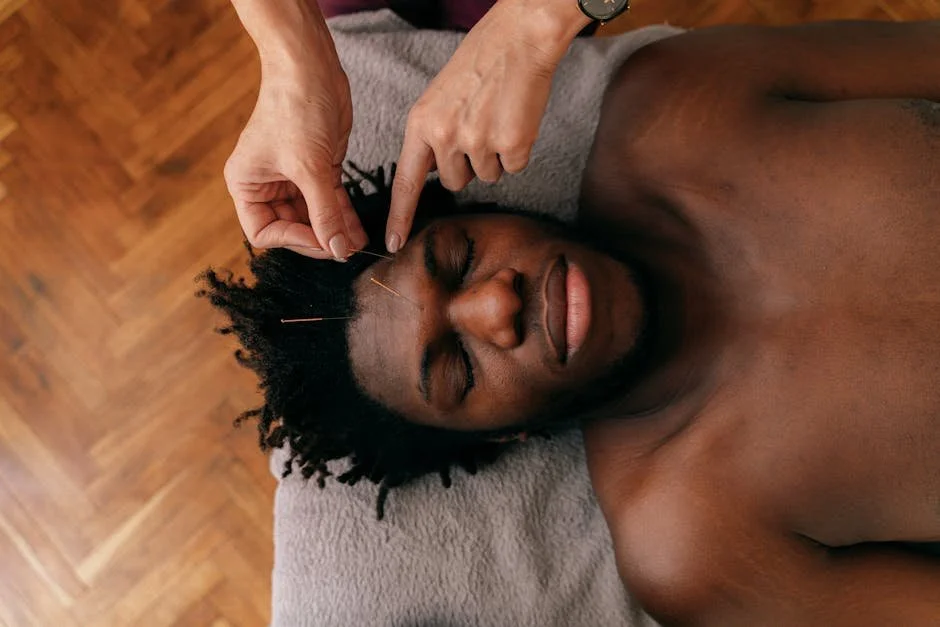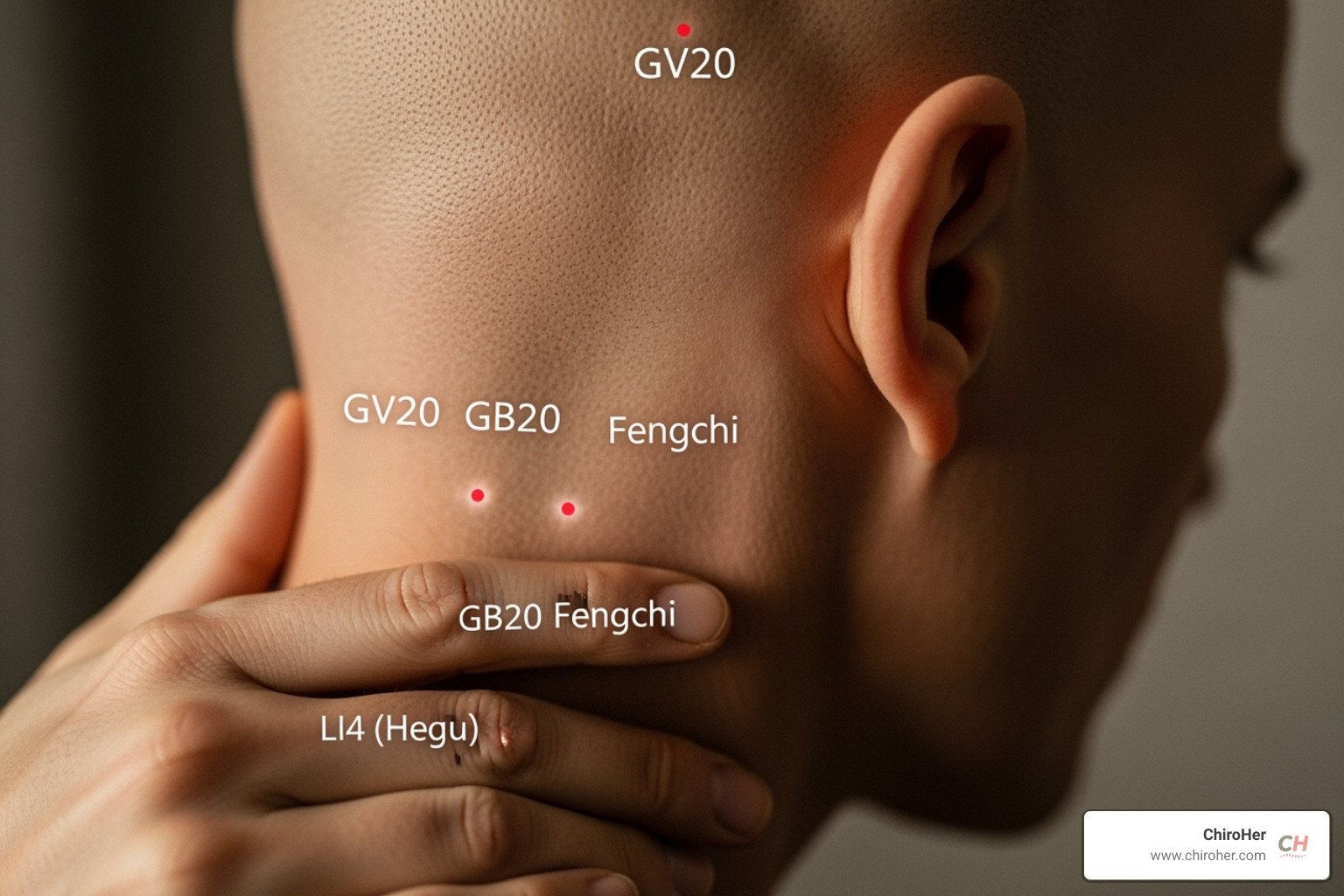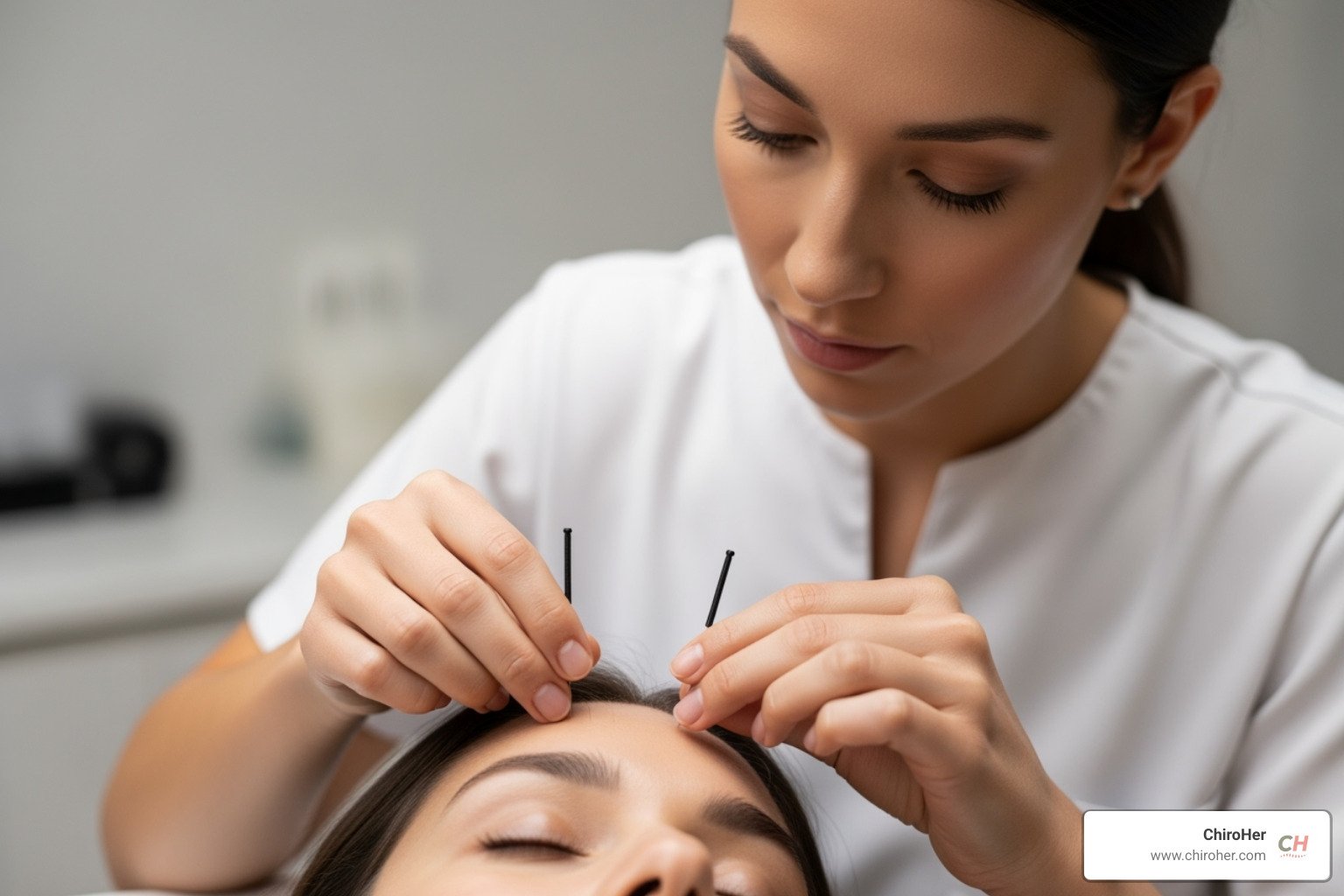Can Acupuncture Really Cure Your Headaches?
Understanding Headaches and Acupuncture
For those seeking acupuncture headaches relief, this ancient practice offers significant hope. It helps many people reduce both the frequency and severity of their headaches. For instance, studies show that nearly 60% of migraine sufferers cut their headache frequency by half or more after trying acupuncture. These positive effects can last for up to six months, making it a powerful, non-drug option with very few risks when done by a skilled practitioner.
If you are one of the millions who deal with headaches, you know how much they can impact your life. About 70% of Americans experience at least one headache each year, and a staggering 39 million struggle with migraines. When over-the-counter medicines aren't enough, it's natural to look for different solutions.
Acupuncture, a key part of Traditional Chinese Medicine, involves placing very thin needles into specific points on your body to balance your body's energy and help it heal naturally.
I'm Dr. Michelle Andrews, founder of ChiroHer. My experience in drug-free pain therapy and mobility improvement, alongside a focus on women-centric healthcare, drives my passion for exploring effective options like acupuncture for headaches.
Headaches aren't a "one-size-fits-all" problem. They are broadly categorized into primary headaches, which are conditions in themselves, and secondary headaches, which are symptoms of another health issue. Understanding the different types can help pinpoint the best strategies for relief.
Let's explore some of the most common primary headaches:
Tension Headaches: The most frequent type, often described as a constant, dull ache or pressure around the head, like a tight band. They are frequently linked to stress and muscle tension in the neck and shoulders.
Migraines: A complex neurological disorder involving severe, throbbing pain, often on one side of the head. This can be accompanied by nausea, vomiting, and extreme sensitivity to light or sound. Some people experience a visual "aura."
Cluster Headaches: Less common but excruciatingly painful headaches that occur in cycles. The pain is sharp and piercing, typically localized around one eye, and may be accompanied by tearing or nasal congestion on the affected side.
Occipital Neuralgia: This condition involves neuropathic pain from irritated occipital nerves at the back of the head, causing sharp, stinging, or electric shock-like pain. Each type presents unique challenges, and our approach to acupuncture headaches relief is always personalized to your specific needs.
Your Guide to Acupuncture Headaches Relief
Many people are turning to acupuncture as a powerful non-drug option for headache relief. It's a fantastic choice for those who want to avoid medication side effects or for chronic pain patients looking to reduce reliance on potentially harmful drugs like opiates. Our holistic approach means we look at the bigger picture of your health, not just your symptoms.
How Acupuncture Works for Headaches
Acupuncture is based on the Traditional Chinese Medicine (TCM) principle of "Qi" (pronounced "chee"), a vital life force that flows through pathways called meridians. When this flow is blocked by stress, injury, or illness, it can cause pain, including headaches. Acupuncture aims to restore this flow by inserting thin needles into specific points (acupoints) to clear blockages and rebalance the body's energy.
From a modern medical perspective, research suggests acupuncture works by:
Stimulating the Nervous System: Needles stimulate nerves and muscles, sending signals to the brain that can modulate pain.
Releasing Endorphins: It encourages the release of endorphins, your body's natural painkillers.
Improving Blood Flow: It can increase circulation to specific areas, aiding healing by delivering more oxygen to tissues.
Reducing Inflammation: Studies suggest acupuncture can have anti-inflammatory effects, which helps with headaches related to muscle tension or nerve irritation.
Activating Brain Pathways: It is believed to activate pathways in the brain responsible for "turning off" pain.
Whether viewed through the lens of TCM or modern science, the goal is the same: to help your body heal itself and find lasting relief.
What the Science Says About Its Effectiveness
Scientific research increasingly supports acupuncture's efficacy for headache and migraine relief. This is not just anecdotal; it's backed by rigorous studies.
Scientific Support for Migraine Relief: A review of trials with nearly 5,000 people found that 59% of migraine sufferers who received acupuncture had their headache frequency cut by 50% or more. These effects can last for up to six months, making it as effective as some preventive drugs.
Effective for Tension Headaches: A review of 11 trials showed that patients receiving acupuncture had significantly fewer headache days. You can explore more about the scientific research on acupuncture for tension headaches here.
Recognized by Health Organizations: The National Institutes of Health (NIH) recognizes acupuncture as helpful for tension and migraine headaches, and the World Health Organization (WHO) endorsed it for pain treatment as early as 1979.
Safe and Low-Risk: When performed by a licensed practitioner with sterile, single-use needles, acupuncture has very few risks. Minor side effects like soreness or bruising are uncommon.
The evidence is clear: acupuncture is a safe, effective, and scientifically supported option for headache relief.
Common Headaches and Migraines Treated
Acupuncture can be beneficial for a wide range of headaches. Our approach is always to understand the specific nature of your headaches to provide the most effective treatment. We frequently address:
Migraines (with and without aura)
Tension Headaches
Cluster Headaches
Occipital Neuralgia
Other primary headaches
Pain from secondary headaches (as a complementary therapy)
Key Acupoints for Headache and Migraine Relief
While every treatment is personalized, some acupoints are commonly used for their proven effectiveness in providing acupuncture headaches relief.
Here are a few of the most well-known points for headache relief:
LI-4 (Hegu): Located in the web between your thumb and index finger, this is a powerful point for pain relief in the head and face. (Note: This point is avoided during pregnancy).
GV20 (Baihui): Situated at the very top of your head, this point is used for headaches on the top of the head, general head heaviness, and dizziness.
GB20 (Feng Chi): Found at the base of the skull in the hollows on either side of the neck muscles, this point is excellent for tension headaches and migraines originating from neck tension.
Ashi Points (Tender Points): These are not fixed locations but rather tender spots that, when pressed, relate to your pain. We find these points through palpation to create a treatment specific to your symptoms.
Trigger Points: Many acupoints overlap with what Western medicine calls trigger points, which are taut bands in muscles that can refer pain to the head. Releasing them can alleviate headache-causing muscle tension.
What to Expect from Your Acupuncture Treatment
We understand that trying something new involving needles can feel daunting. Rest assured, at ChiroHer, your comfort and safety are our top priorities. Most of our patients find the experience surprisingly relaxing.
Your First Appointment: A Step-by-Step Guide
Your first step toward acupuncture headaches relief begins with a thorough, personalized approach.
Consultation and Diagnosis: Your first visit starts with a detailed conversation about your health history and the specifics of your headaches. We'll discuss your lifestyle, stress levels, and overall health goals. Based on this, we'll form a Traditional Chinese Medicine (TCM) diagnosis to identify any underlying imbalances contributing to your headaches.
Treatment: We will gently insert very thin, sterile, single-use needles into the appropriate acupoints. The needles are so fine (about the width of a human hair) that most people feel little to no pain. You might feel a mild sensation like a dull ache or tingling, which indicates the treatment is working.
Relaxation: After the needles are in place, you'll relax for about 20 to 30 minutes. Many people find this time incredibly peaceful and may even fall asleep. A typical appointment lasts about an hour.
Safety and Side Effects: Acupuncture is very safe. Minor side effects like slight soreness or a small bruise at the insertion site can occur but are uncommon. Serious risks are extremely rare when treatments are performed by a licensed practitioner using sterile equipment, as we always do at ChiroHer.
Creating Your Plan for Acupuncture Headaches Relief
Every treatment plan is personalized to fit your specific needs and help you achieve lasting results.
Session Frequency: For effective headache relief, consistency is important. While some people feel better after one session, chronic conditions usually require a series of treatments. We typically recommend an initial course of 6 to 8 weekly sessions. Your practitioner will design a custom plan based on your response. Many patients then transition to maintenance treatments to sustain their relief.
Insurance Coverage and Costs: While Medicare currently only covers acupuncture for chronic lower back pain, many private insurance plans do cover it for other conditions, including headaches. Coverage varies, so we recommend contacting your provider to understand your benefits. We can also discuss transparent out-of-pocket costs with you.
Complementary Therapies: Acupuncture works well on its own and can be combined with other treatments for comprehensive relief. Depending on your needs, we might suggest:
Acupressure: A form of massage using pressure on acupoints, which you can do at home between sessions.
Chiropractic Care: Combining acupuncture with chiropractic adjustments can address both energetic imbalances and structural issues that contribute to headaches.
Nutraceuticals and Dietary Changes: Certain supplements and foods can help manage headache triggers.
Stress Management: Practices like yoga, meditation, and biofeedback can help manage stress, a common headache trigger.
Aromatherapy: The use of certain plant oils, like lavender, has been found to be a safe treatment for acute headache pain for some individuals.
Aerobic Exercise: Regular physical activity improves circulation and relieves stress, which can help counteract factors contributing to migraines.
At ChiroHer, our award-winning, patient-focused care means we prioritize your well-being, especially for women and prenatal clients seeking natural health solutions. We're committed to delivering personalized care in an upscale, comfortable setting. If you're ready to explore acupuncture headaches relief, we invite you to schedule an acupuncture session online or give us a call at our Oklahoma City, Yukon, Edmond, Nichols Hills, Del City, Mustang, or Moore locations.
This guide is for informational purposes and is not a substitute for already established medical advice from your healthcare provider.



